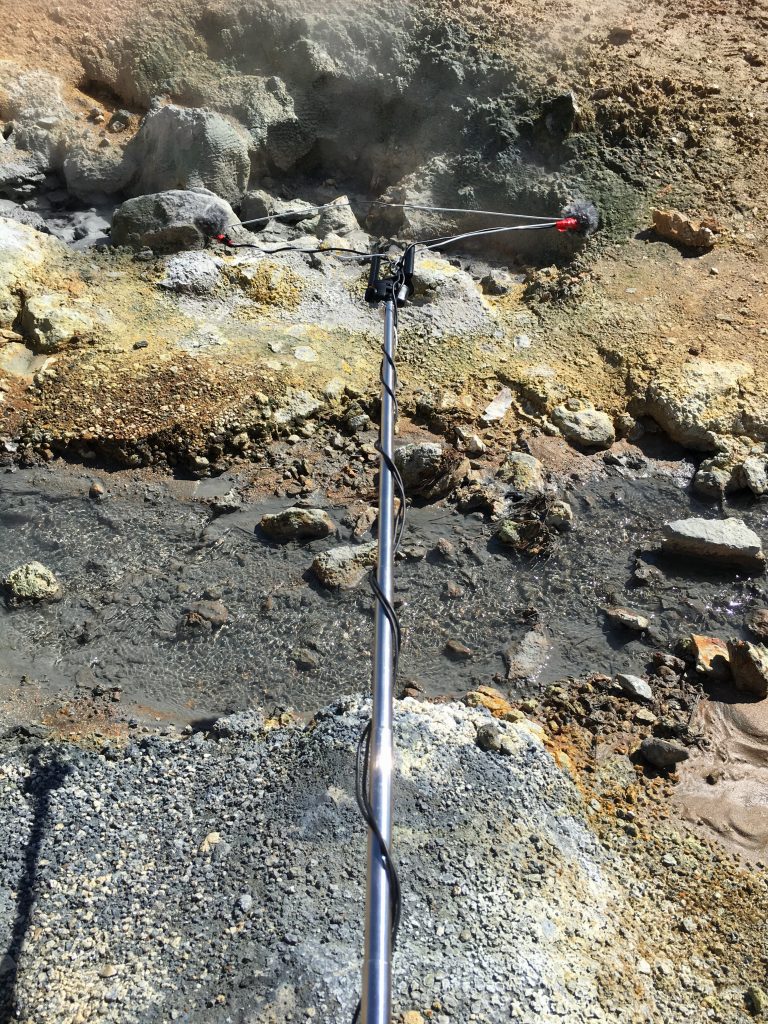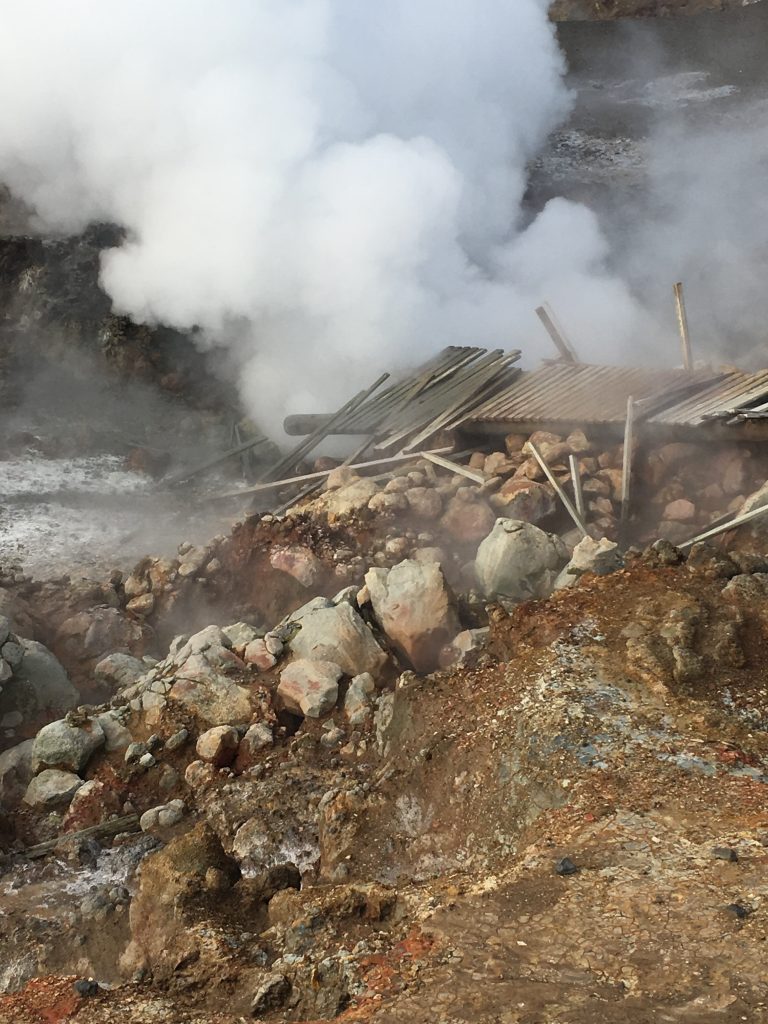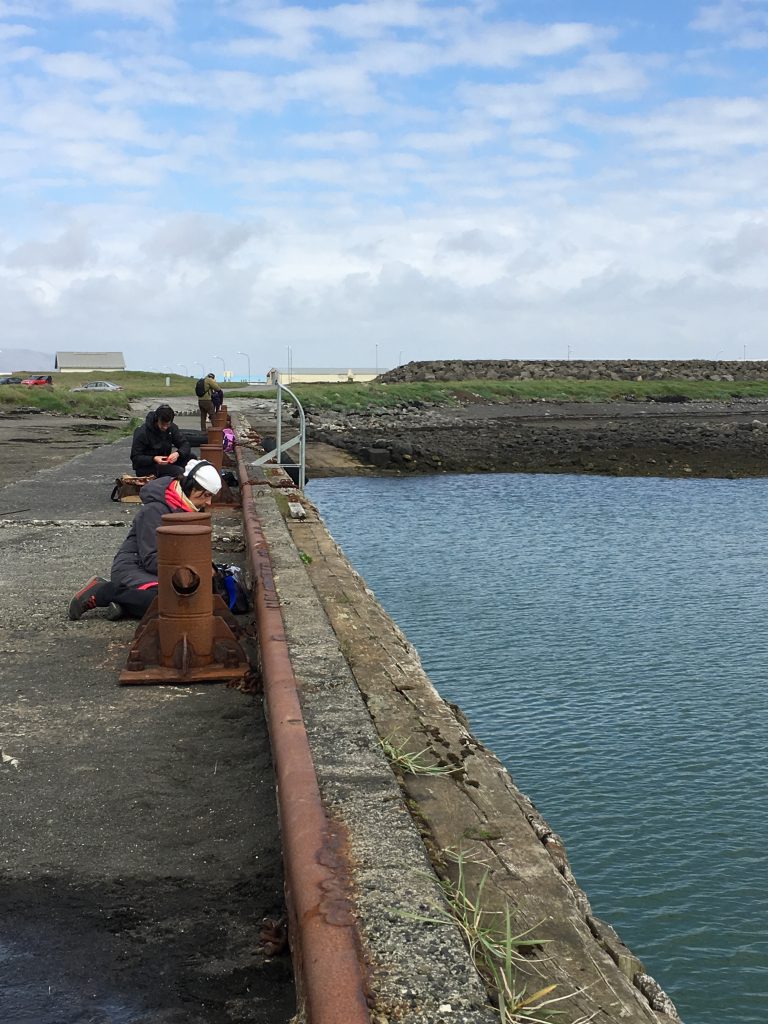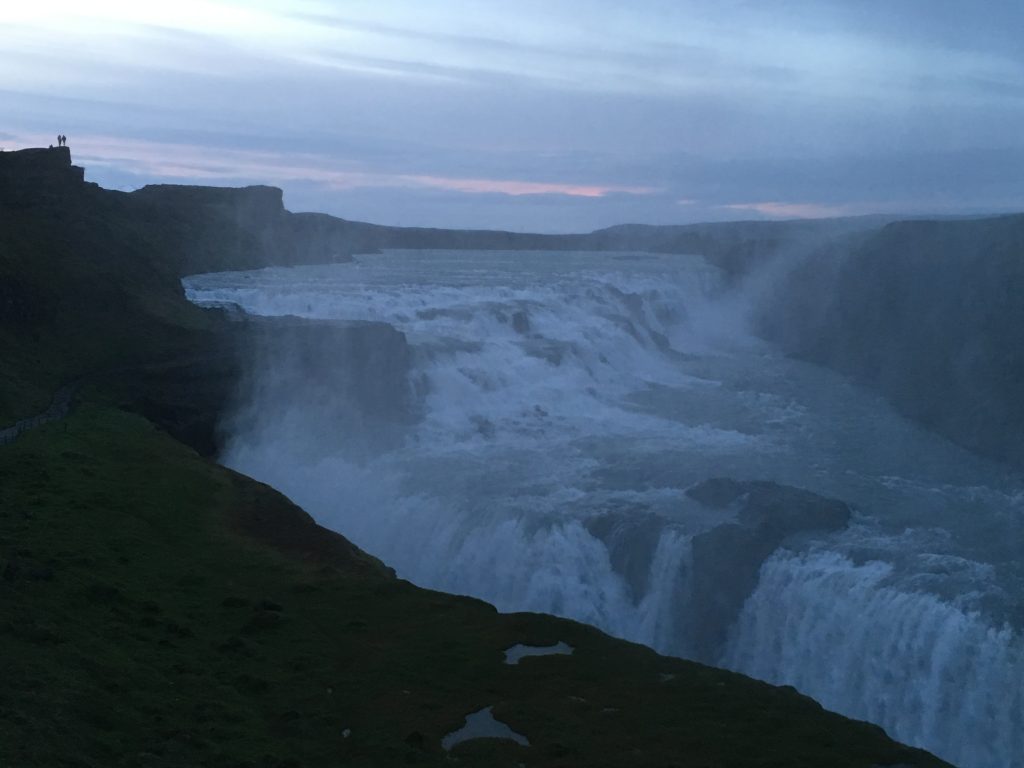
Do you want to do more field recording? Sure, we all do.
Recorded sound is at the core of so much of our craft, and so the art / act of getting somewhere afield, pointing a microphone and capturing sound feels like one of those fundamental skills we all should know. You know, like fixing a flat or painting a living room.
Except that I rarely change a flat–certainly not enough to be any good at it.
Why I Went
Why don’t we record as often as we mean to? It all comes down to time: as production cycles quicken, we have less of it, and the conversion of effort to usable, accessible recorded material can seem a really wasteful process.
Consider the steps involved in planning a larger recording session, all the pieces you’ve got to account for:
- From the start, you’ve got to scout the space, accounting for the availability of interesting sounds–many of which, like naturally occurring phenomena and animals, you can’t force out. You’ll contend with ambient noise pollution, the observation of laws and the potential need for permits.
- Then, travel and setup: which mics, what protection, what batteries, what arrays. What’s the weather going to be like? What if that changes? How should takes be named and tracked for easy organization later on?
- When you’re finished, there’s the clerical stuff of cleanup, editing, metadata, archival and distribution.
It’s a wonder anyone does it. Let’s just order in from BOOM.
Practical thoughts of field recording often turn to the real-world blockers above, strangling the impulse to record before it’s even had a chance.
At a distance, though, how romantic is the idea of field recording? You know, field recording the way you wish it were when you went out, or the way you figure it must be for all of your favorite recordists: folks with time, money, access and gear. This idea of going out somewhere, sitting amidst the quiet, allowing nature to run its course while the red light blinks. Snatch some ephemeral strand of time passing by, print it to tape, bring it back home and turn it into art. Fantastic.
In a world pressed for time and so, so full of noise, this idea of field recording represents not simply capturing sound, but the dream of a world that’s not so hostile towards it. And I love dreaming..
As a sound designer, you’ll spend thousands of hours auditioning libraries in fragments and throw most of that experience immediately away; even short-term memory’s too good for it when you’re on a deadline. But sometimes, something catches and you stop clicking around for a second, simply letting it play through–a Quiet Planet ambience from somewhere you’ve never been; a binaural clip from Michael Raphael that throws you back into a summer in New York and all the things you felt when you were in it.
[perfectpullquote align=”left” cite=”” link=”” color=”” class=”” size=””]… this idea of field recording represents not simply capturing sound, but the dream of a world that’s not so hostile towards it.[/perfectpullquote]
I’d hear things like that and want to make them myself, so I bought a lightweight, stealth / binaural recording setup and proceeded immediately to never use it. Now I had new excuses, new problems: it wasn’t set up to go, the wires were gonna get all tangly, I don’t know what I’d use the stuff for. Also, I was “busy.” I had this idea of wanting to be a recordist, but really just wanted to make the stuff that they made without putting in all the work I’d need to do to get there. What I wanted was a nudge out the door, just a little structure to get started.
Enter the Wildeye International School of Film-making’s Sound Recording in Iceland class, led by sound recordist Chris Watson and recordist / artist / microphone maker Jez riley French. I first learned of it through a friend some ten months back and it got me instantly to daydreaming. It seemed an incredible opportunity–a chance to pay away some of the logistical friction, sit in with some insanely credentialed recordists and simply learn. Like a Groupon course for an introductory glass blowing workshop or something, but with microphones and other audio enthusiasts. Chris and Jez run a handful of smaller workshops around the English countryside, but the annual weeklong Iceland excursion is the main event: seven chartered days of interesting sights and sounds. Food, lodging, and good company in the one of the most breathtaking spots on earth. Iceland was a chance to fall in love with field recording again for the first time! There were so many details I didn’t know, going in; so much gear I needed that I didn’t have.
But that didn’t matter: I was gonna go. I knew it was going to be something special. In the worst case, I’d be in Iceland.
So in the interest of our monthly theme, here’s one or two things: my experiences with the Tutorial that was the Wildeye course, and a few second- or third-hand takeaways that might help you reapproach field recording or get yourself unstuck.
Friends You Haven’t Met Yet

The course description on the site covers most of what you need to know about what you’re getting into, but one thing I hadn’t been certain of–especially in the last couple of evenings before the trip started–was, well, whether I was totally qualified to do it. I don’t mean that entirely in any kind of imposter syndrome way, but Chris and Jez are big deals, and Iceland’s a pretty rare place. Who all was taking this trip, and what were they bringing along? The Wildeye site offers only this:
It is expected that you will have some recording experience and your own equipment to bring (although we will have some extra gear with us that everyone is welcome to try).
I’d come in figuring on a full team of game audio and post-production folks, geared to the hilt, ready to strip-mine the Icelandic wilds for a very specific set of sounds. I had two DPA-4060 lavalier omnis, a small preamp and a portable recorder.
There was, actually, no one standard of experience, of gear; and everyone was there for different personal and professional reasons. The 14 of us were drawn from all over–all regions American, Canada via Spain, England, Switzerland, France. We were game audio, post-production editors and mixers, photographers, conservationists, students undergraduate and doctoral, ambient musicians, new media artists, percussionists and sculptors and drone fliers. If there was something about the Icelandic soundscape that’d drawn you in, and you’d managed to reserve a place, you–apparently–fit right in.
What You’ll Need
As for equipment, it ran the full range, from Soundfield microphones and Double MS Schoeps kits to folks with a single handheld recorders and gear on loan from Chris and Jez. The DPAs I’d felt so slightly insecure about are, as it turns out, some of Chris and Jez’s favorites, and very well suited for ambience recording when set up in a spaced pair just about twelve inches apart. Chris famously likes to snap to this distance by fastening each mic to the opposite end of a coat hanger. The DIY boom pole below (at the end of an otherwise remorseful Selfie Stick) gave me some reach to get to specifics, like burbling mud pools just slightly out of reach across a few feet of scorching sulfated ground.

I spent most of the rest of the time with them clamped to opposite sides of my head in a pseudo-binaural configuration, and that was a totally adequate setup to capture most of what we ran into on the trip. Such a setup I brought probably ran me about $1800 total, which isn’t cheap–but it ain’t Schoeps money. With solid wind protection, I could’ve gone with less and still felt not an ounce outclassed or unprepared. Some of my favorite recordings of the trip came out of the PCM-M10 simply because I had it there and could get it set up quickly.
Everything else I’d wish I’d had would’ve just been pieces of kit to make pulling the recorder out as frictionless as possible. Andy Martin gave a wonderful look into his Bucket o’ Preparedness that contains everything he needs to go camping / recording in the woods; it’s provisioned and ready to rock at a moment’s notice. Ditto his recording rig backpack, which he hangs on a peg next to the door–meaning it’s always on him by the time he’s through it. I could’ve put a little more thought into streamlining my setup for easy deployment–or at least brought some electrical tape along–and benefited greatly from it.
But really, if you want to go, don’t let your portable recording setup stand in the way. You’ll use it to the full extent of what it can do, and it’ll be enough for you and where you are on the path.
What You’ll Do
Again, the Wildeye course description’s pretty good about letting you know the places you’ll be getting into. The sheer variety of locales serves as one answer to the unasked “Why Iceland?” question of the whole trip, which is to say that I don’t think there’s anywhere else out there that features so many unique biomes within easy driving distance. The country also sits nicely at the Venn intersection of a generally low noise floor and a trusting, laissez-faire attitude towards folks prowling around spaces they maybe shouldn’t be.
All of that rolled up with June’s eternal daylight makes for as close to ideal outdoor recording conditions as you’ll ever find–and the Wildeye course takes advantage of them day in and day out. As the course description jokes:
we’ll have lots of time for recording, exploring, discussing and, occasionally, sleeping …
[perfectpullquote align=”right” cite=”” link=”” color=”” class=”” size=””]Maybe it worked, maybe it didn’t–but I was actively listening. The way in which The Witness left me permanently suspicious of the world and always looking for puzzles, my time with Wildeye did for sounds.[/perfectpullquote]
Each morning, we’d have breakfast and pack lunches before piling into the vans, bound for a handful of sites vetted by Chris and Jez as interesting places to have a wander and hunt for sounds. It was all really flexible, though–any of us could simply stay round the hotel, roaming the nearby hills and meadows; moreover, even the van destinations were negotiable and open to the greater whims of the group. If there were something we particularly wanted to see, or didn’t, Chris and Jez were happy to divert course. They were guides and mentors but ultimately in our service.
Days were usually filled with two or three separate stopover points, one-two hours out of the car at each, before finally returning home for dinner sometime in the late evening. Owing to the unending daylight, we’d sometimes go back out in the evening for bonus time. Plenty of opportunities to sleep in the vans the following day, after all.

Many of the spots we went to were bucket-list gorgeous, featuring the One Thing there that you knew you would record–the burbling of a geothermal pit, the sound of a waterfall, some unignorable showpiece of the area. But the best spots were the mundane ones, the real S-Tier gauntlets of field recording, which would test your ability not only to set up a good stereo image and be quiet and press record, but to find the thing asking to be recorded in the first place. When you’re pulling into your third seawall parking lot you’ve already recorded a bunch of surf, you have to get clever; in that cleverness is everything. Here, I stuck my mics in between the cracks of a small stone structure because I was tired of recording direct ocean; here, I’d bury my lavaliers amidst some rushing reeds; here, I’d make a footsteps inventory of the area after 40+mins of birdsong seemed sufficient. Too quiet to record ambience? Take advantage of the nonexistent noise floor and throw rocks. etc. etc.
Maybe it worked, maybe it didn’t–but I was actively listening. The way in which The Witness left me permanently suspicious of the world and always looking for puzzles, my time with Wildeye did for sounds.

Be flexible–look for the best thing to record in the situation you’re in and with the gear you have. Then, record that. Be open with what you’re looking for and you’ll like what you find.
All great lessons to learn.
What I Wish I Brought
- Travel tripod. Self-explanatory, really. There were times I wanted to set my mics up somewhere that ear clips and coat hangers couldn’t do it, and this would’ve been useful.
- Longer runs of cable (though, this is a moot point for doing binaural recordings unless you’ve got a Fritz head).
- Better wind protection. No matter where you are, the ocean’s never too far away, and Icelandic winds kick up something fierce. I’ve since added a couple of Bubble Bees to my setup but could really have used them on the trip; it would have saved me a lot of editing around capsule distortion. Why I thought the pop filters on my DPAs would hold up to any degree is beyond me, but those minutes of imperfect recordings were exactly the motivation I needed to get that right.
- Two more channels, mostly reserved for hydrophones / miscellaneous mics. The “Jez perspective” (not a term, unless you want to count me coining it just now)–that is, the unheard frequencies and media Jez likes to record in when making sound studies of a landscape–really came to affect my perspective on sound hunting and what’s out there to record in a given environment. Some of the most interesting stuff I heard from comrades on the Iceland trip were from contact mics on fence wires and hydrophones under glacial lakes. I’m getting into the idea of four channel mixed media / Above+Below sort of recording these days and would’ve loved to have two extra channels of stuff running throughout most of the trip.
Here’s an incredible contact mic recording from Jake Muir that I think instantly makes the point.
- (Slightly) better preamps. The noise floor in Iceland’s so impossibly low in some places that you’d spin the dials all the way up and catch absolutely nothing. There were a few really subtle ambiences I couldn’t capture the way I wanted to for the limitations of my gear, but that’s why we’ve got post-production.
What’s Stuck With Me

In the end, there’s too much to share, and to provide context for every little takeaway I had from the trip would keep you here until Christmas.
And, come on. In a month of Tutorials, you must’ve seen by now that the only way anything lesson ever sticks is to get out there and learn it in the act. Still, I’ll pass along my Best Ofs from the trip.
- Start recording. Make terrible ones. Own them. You’ve read this before and you’ve seen it everywhere as advice in every discipline, because it’s true. You do not start recording the things you want by buying some gear and letting it sit in the corner–trust me, I tried that. Time and again I was blown away by some of the stuff Chris, Jez and others auditioned during playback, recordings made in the same spaces we’d all been but were somehow so much more compelling. We were all simply pushing buttons, but their recordings were informed by hundreds and hundreds of hours of failed ones. What I was hearing in their work was all of that experience coming to bear.
- Sometimes, don’t record–yet. This seems at odds with the above piece of advice, but it isn’t, because it’s the setup and decision making process which contains all of the work that goes into field recording. Once you’re rolling tape, all you’ve got to do is get out of the way. And consider: would you rather ten minutes of usable sound, or fifty minutes you hate? The best stuff I heard on the trip came from those who canvassed an area and found the right places to record before setting their gear down. There’s a temptation when you’re somewhere new to recording anything and everything all the time because it’s all so different–but the discipline of picking your battles is really valuable to build up. Identify noise in the area and, if you can’t isolate it, balance it within the stereo field. Find where the activity is, and be near it. If you can, visit a place in advance, simply to walk around and listen for what’s good; come back prepared to record it at a time that makes sense. Move your mics around. Check your levels. Chris himself has become an incredibly selective recordist for all his hundreds of hours of “crap” recordings.
- Listen actively, learn to look for the wonder in the world. Modern life is full of noise and we might never get back to Iceland before it drowns in tourism–so we may as well appreciate the things we can record. I’ve been having a blast hunting for interesting sound and stories in even everyday urban life since returning from this trip because it’s what’s there and feels like the thing that wants to be recorded where I am right now. May as well practice; I don’t think I can leave my gear off until Chris and Jez’s next trip abroad.
- The Way It’s Meant to Be Heard: Chris and Jez are very keen on recording and playback levels, that is, keeping them where they’re meant to be. Recording an ambience hot or playing back small sounds loud flattens them out, allowing our ears to work much less hard to get at the naunces of a subtle recording. This, in fact, kills the subtlety. I was shocked several times on the trip to discover how much better so many recordings sounded when played back more quietly, simply being what they were meant to and drawing my attention in as I grasped at their details.
Final Words
I went into the Wildeye expedition with a very narrow view of the point of field recording–it was about the sounds, the raw output. I was looking to measure the worth of the trip by how much usable stuff I brought back.
Wouldn’t you know it, it’s just about everything but the recordings that really mattered. Many of us spent a last few days in Reykjavik after the trip had ended, having separately planned to explore the city on our own before heading home. Instead, we barely left each other’s company, trying to keep the trip and our connections to each other alive, like the real world was going to be some really scary place that didn’t understand all the new ways we saw the world. (I think we were pretty much right on that last part, but, you settle back in.)
I met some incredible people, saw some breathtaking facets of nature that reminded me that for all the ways in which we’re wrecking the planet, this too shall pass; it’ll kill us off and recover like it’s done for thousands of years. I spent too much on overpriced drinks at Reykjavik’s Lebowski Bar. I ended up with a couple of recordings, too.
In the end, I got what I wanted: that romantic perception of field recording now feels less a fantasy and more a reality I can choose, simply by shifting my perceptions around. Field recording seems now not so much as this necessary evil along the path to putting things in my library, but as a process I want to go and do. The things that could make field recording so painful–the scouting, the setup, the waiting, the editing–now feel like all the fun parts, because it’s how you learn. The process hasn’t changed, but I have.
I’ll leave you with a couple of really special recordings from our last night on Wildeye.
Summertime Iceland’s eternal daylight meant that we could work late. It also afforded us the chance to visit some of the busiest tourist spots on planet in moment when most sane people’d be asleep. Our final stop was at the Geysir geothermal area in þingvellir, which is traditionally just slammed with visitors. But we were the only ones around; the only folks in the entire world there at that moment. I had the binaurals already clipped on and decided to record this last walk out.
We spent our last twenty minutes of the trip semicircled around this natural wonder in total silence, all of us simply waiting for the earth to do its thing. No rushing it, nothing we could do but simply be in the moment and let the cycles of nature turn over–just like you imagined it. And after four or five takes, we called it.
I rushed ahead of the group on the way back to stop and lean in over the guide rails a couple of times to record the ambient sound of this place, taking in as much of it as I can.
My single favorite recording of the entire trip’s just under a minute long; it’s too short to loop and I’ll probably never be able to use it anywhere. That’s totally okay.
Keep listening.
Thanks Luca, very informative.
I’m in the same position as you were prior to the trip, almost never getting of the couch to wave my Zoom H2 (!) around :D
Amazing tutorial/blog! Luca Fusi is witty and wildly honest about his experience and how it changed his perception of field recording. The true part is when we start to listen, practice and learn… So much is said here in simple words. Thank you!
Thank Luca!
I have been to this course twice! Absolutely loved it. The sounds I have recorded have been useful but the experience invaluable.
Hey Luca, thank you so much for your reflections.
It turned out to be a very inspirational article – new projects started popping in my head while reading : )
All the best,
ps.: I was completely blown away by Jake Muir’s recording.